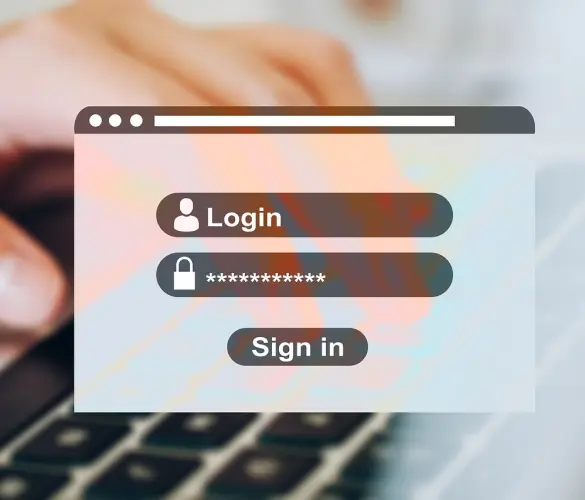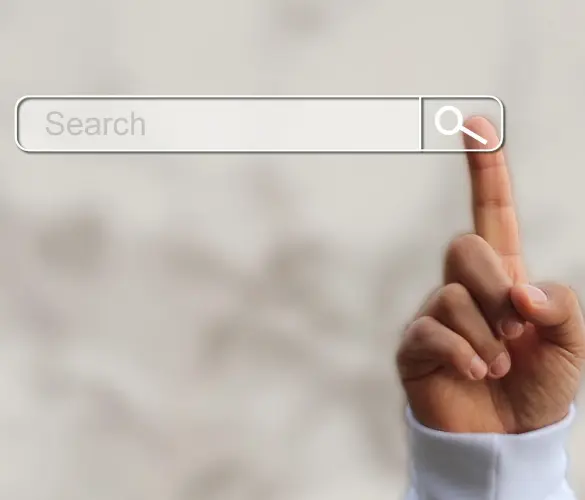38 WordPress Interview Questions and Answers

WordPress is the world’s most popular content management system (CMS), creating an industry of developers dedicated to creating the best possible site they can with its tools. Many of those developers want to make the jump to a professional job, and they may be preparing for an interview by researching common WordPress-related questions.
This post will provide 38 common questions for entry-level WordPress developer positions and their corresponding answers.
Researching these questions will help you understand where you’re at in your developer journey and what areas of your WordPress knowledge need more work, giving you a better chance of acing your interview.
General WordPress Interview Questions
The technical part of the interview will likely start with a series of questions about WordPress and your previous experience using it (professional or otherwise).
Basic WordPress Knowledge
These questions will probe your understanding of WordPress fundamentals.
What are themes and child themes?
WordPress themes determine its design, layout, and overall appearance and control how content is displayed. Themes consist of templates, stylesheets, and other files that define the visual elements and user interface.
Like plugins, we need to update themes to improve performance, design, and security.
Child themes are sub-themes that inherit the functionality and styling of a parent theme. They allow users to customize and modify a site’s appearance without altering the parent theme’s core files, ensuring updates to the parent theme don’t override customizations.
By using child themes, developers can create unique designs while maintaining the stability and update compatibility of the original theme.
What are plugins, and how do they work?
WordPress plugins are software extensions that enhance the functionality of WordPress websites and blogs. They work by tapping into WordPress’s core code through dedicated hooks and filters.
Plugins allow developers and users to add new features, customize existing behavior, integrate third-party services, and streamline processes. They are self-contained packages of code that can be easily installed, activated, and managed through the WordPress admin interface.
Popular examples include ecommerce platforms, SEO tools, security scanners, and form builders.
Plugins leverage WordPress’s open-source architecture, providing third-party solutions that cater to various website requirements without modifying the core WordPress codebase.
What are the default WordPress tables?
A WordPress table is a structured way of storing data in a WordPress database, typically a MySQL or MariaDB database. WordPress uses multiple tables to organize and store different types of information related to the website, such as posts and pages’ content, user accounts and profiles, comments, etc.
The 11 default WordPress pages are:
- wp_users. Stores user account information like username, password, email, etc.
- wp_usermeta. Stores user metadata like personal settings, session tokens, etc.
- wp_posts. The main table for storing content like posts, pages, revisions, etc.
- wp_postmeta. Stores metadata for posts like custom fields, featured images, etc.
- wp_comments. Stores data for blog post comments.
- wp_commentmeta. Stores metadata for comments.
- wp_terms. Stores categories, tags and other taxonomies.
- wp_term_relationships. Maps relationships between posts and terms.
- wp_term_taxonomy. Stores metadata for taxonomies like categories and tags.
- wp_links. Stores data for linked resources like blogrolls.
- wp_options. Stores configurable options and settings for WordPress.
What is the functions.php file?
The functions.php file in WordPress is a template that themes use to add custom PHP code to enhance functionality.
It acts like a plugin, allowing developers to define custom functions, enable features, and modify default behaviors without altering core WordPress files. Common uses include registering menus, adding widget areas, enqueuing scripts and styles, and creating custom shortcodes.
Each theme can have its own functions.php file, which runs only when that theme is active.
What are shortcodes, and what do they do?
Shortcodes in WordPress are small code snippets enclosed in square brackets, like [example], that allow users to add dynamic content to posts, pages, and widgets without writing complex code.
Shortcodes simplify embedding functionalities such as galleries, forms, or custom content by replacing the shortcode with the corresponding output when the page is rendered.
What is the 404 page, and how do you create one in WordPress?
A 404 page is the page your site will display when the requested page cannot be found.
Every default WordPress theme has a 404.php file, but not all themes have a custom 404 error template file. If they do, it will be in their own 404.php file. WordPress will automatically use that page if a Page Not Found error occurs.
To create a custom 404 page, add a 404.php file to your theme’s directory. This file should include HTML and PHP code to define the layout and content of the error page, providing a user-friendly message and navigation options.
Customizing the 404 page improves user experience by helping visitors find relevant content instead of encountering a generic error message.
What is the is_front_page function?
The is_front_page() function checks whether the current page being displayed is the site’s front page, which can be either a static page or the latest posts. It returns true if the front page is being viewed and false otherwise.
This function is useful in theme development for conditionally displaying content or styling on the front page.
It helps developers customize the homepage differently from other pages, enhancing the site’s design and user experience by applying specific templates or features to the front page.
How do you add custom CSS to a WordPress site?
To add custom CSS to a WordPress site, you can use several methods. The simplest way is through the Customizer. Go to Appearance > Customize > Additional CSS and enter your custom styles.
Alternatively, you can add CSS via a child theme by creating or editing the style.css file.
There are also plugins like Simple Custom CSS or SiteOrigin CSS, which allow users to add custom CSS without touching theme files.
For advanced users, enqueuing a custom CSS file in the theme’s functions.php using wp_enqueue_style ensures proper loading.
These methods enable you to customize the site’s appearance safely and effectively.
What are custom post types, and how do you create one?
Custom post types are content types beyond the default blog posts, pages, attachments, etc. Developers can create custom post types as templates for diverse content like portfolios, testimonials, or products.
To create one, use the register_post_type() function in your theme’s functions.php file or a custom plugin. You can also use a plugin like Custom Post Type UI.
What are custom fields, and what are they used for?
Custom fields in WordPress are metadata used to add additional information to posts, pages, and custom post types.
Custom fields allow users to store and display extra data, such as author details, event dates, or product specifications. Users and developers can add custom fields through the admin interface or programmatically using functions like add_post_meta().
Some plugins simplify the process of creating custom fields, such as Advanced Custom Fields.
What is the WordPress loop?
The WordPress loop is a PHP code structure used to display posts on a WordPress site. It processes each post in the current query and formats it according to the specified template. The basic structure is:
if ( have_posts() ) {
while ( have_posts() ) {
the_post();
// Display post content
}
} else {
// No posts found
}In this loop, have_posts() checks if there are any posts to display, and the_post() sets up the post data for use within the loop. The loop allows developers to customize how posts are displayed, whether in an archive, a single post, or a custom template.
Technical Experience in WordPress
In addition to questions that reveal your knowledge of basic WordPress structures and fundamentals, the interviewer may ask questions about your specific experience in WordPress development.
Regardless of whether the interviewer expects you to have no experience or multiple years of professional experience, you’ll be expected to at least have experience building WordPress sites on your own.
How many years of experience do you have working with WordPress?
Some job openings are looking for junior developers with potential, but others may be looking strictly for seasoned developers with several years of experience and proof to support their participation in prior projects.
Have you used a page builder like Elementor?
Answer whether you’ve used a page builder plugin such as Beaver Builder or Elementor. Depending on the agency you’re applying for, they may or may not use page builders.
Some agencies use only page builders, while others (like us) never use them. Some agencies may use them only on some projects. If you have only ever used page builders, it’s unlikely you will get a job as a WordPress developer expected to code.
But if you have coding experience, it should be easy for you to learn to use page builders.
Can you mention some examples of custom themes and plugins you have developed?
This is your chance to explain what you’ve done in the past that qualifies you for the job. Explain the projects you’ve been a part of, how you’ve participated in developing custom plugins and themes, the challenges you faced during the project, and how you overcame them.
Your answer could be like this: “I developed a custom theme for an e-commerce site, implementing a unique design with custom post types for products and advanced filtering options. One challenge was optimizing page load times with many high-resolution images. I resolved this by implementing lazy loading and optimizing images.”
What hosting platforms have you used?
Reply with the hosting provider(s) you’ve used for previous projects. Regardless of professional experience, the interviewer will likely expect to have taken at least one site live.
In-Depth WordPress Interview Questions
Depending on the position you’re applying for, you may get questions about the deeper aspects of WordPress development. Let’s explore some of the questions you should be ready for.
Architecture and Theme/Plugin Development
What’s your approach to designing theme and plugin architecture?
Emphasize scalability, performance, and maintainability.
Explain that for themes, you use a modular approach with reusable components and adhere to best practices like separating logic and presentation. Emphasize ensuring responsiveness and cross-browser compatibility.
For plugins, mention following WordPress coding standards, utilizing hooks and filters for extensibility, and designing with a clear separation of concerns. Highlight the importance of thorough documentation, including configuration options in the admin panel for user convenience. Stress prioritizing security by validating and sanitizing inputs and adhering to best practices to protect against common vulnerabilities.
How would you address compatibility with future WordPress versions when developing a plugin?
When answering this question, you should mention the importance of keeping up to date with WordPress documentation and following best practices to ensure long-term compatibility.
Mention the following practices:
- Adhering to WordPress coding standards.
- Using core functions and APIs.
- Testing with beta releases.
- Maintaining backward compatibility.
- Monitoring WordPress updates.
- Using modular design for easy updates and maintenance.
Performance and Security Optimization
How do you approach performance optimization in WordPress projects?
Explain the techniques you use to optimize your site’s performance. The interviewer will likely expect you to mention common optimizing strategies such as:
- Caching plugins like W3 Total Cache or WP Super Cache to store static versions of your pages.
- Image optimization plugins to compress and resize images using tools like Smush or ShortPixel to reduce load times.
- Minification of CSS, JavaScript, and HTML files to reduce their size.
- Content Delivery Networks (CDNs) to deliver content faster by using servers located closer to the user.
- High-quality hosting for fast overall WordPress performance.
- Database optimization with plugins like WP-Optimize.
- Lazy loading for images and videos, so they load only when they enter the viewport.
How do you ensure the security of a WordPress website?
Explain the measures you take to ensure the security of a WordPress website. The interviewer will expect you to mention several best practices, such as:
- Regular updates. Keep the WordPress core, themes, and plugins updated to the latest versions to patch known vulnerabilities.
- Strong passwords. Use strong, unique passwords for all user accounts and encourage users to do the same. Implement two-factor authentication (2FA) for an added layer of security.
- Security plugins. Install reputable security plugins like Wordfence or Sucuri to monitor and protect the site from threats.
- Limit login attempts. Prevent brute force attacks by limiting the number of login attempts through plugins like Limit Login Attempts Reloaded.
- Secure hosting. Choose a reliable hosting provider with robust security features.
- SSL certificates. Use an SSL certificate to encrypt data transmitted between the server and users.
- Backup solutions. Regularly back up the website using plugins like UpdraftPlus or BackupBuddy to ensure quick recovery in case of a security breach.
- File permissions. Set proper file permissions to restrict unauthorized access to sensitive files. For example, the wp-config.php file should have restricted permissions.
- Disable file editing. Prevent users from editing theme and plugin files through the WordPress dashboard by adding define(‘DISALLOW_FILE_EDIT’, true); to the wp-config.php file.
- Monitor activity. Regularly monitor user activity and server logs for any suspicious actions or unauthorized access attempts.
Showing you have experience in these practices will boost your chances of making a good impression.
API Integration and External Services
Do you have experience integrating third-party APIs or external services into WordPress projects?
Explain your experience integrating third-party APIs and external services into WordPress projects. Give examples, such as Google Maps, MailChimp, and payment gateways like Stripe and PayPal.
Mention using WordPress’s built-in HTTP functions like wp_remote_get and wp_remote_post for secure API requests, and confirm that you sanitize and validate data.
Also, mention how you implement error handling and logging to manage API responses and issues.
How do you handle data synchronization between WordPress and external systems in real-time?
Answer by explaining how you use webhooks and REST APIs.
Webhooks enable external systems to automatically send data to WordPress upon certain events. Custom endpoints can be created using the WordPress REST API to securely receive and process this data.
For periodic updates, implement cron jobs or scheduled tasks if real-time synchronization isn’t necessary. Remember to ensure data integrity through validation, sanitization, and robust error handling and logging.
Testing and Debugging
How do you conduct testing and debugging on a WordPress project to ensure everything works properly?
To conduct testing and debugging on a WordPress project, you should use tools like:
- Local development environments. Set up a local development environment to safely test changes.
- Automated testing. Use automated testing tools like PHPUnit for unit tests and Selenium for end-to-end testing.
- Manual testing. Perform manual testing to ensure user interactions function as expected.
- Debugging tools. Utilize debugging tools such as WP_DEBUG in wp-config.php, Query Monitor, and browser developer tools to identify and fix issues.
- Version control. Implement version control with Git to track changes and facilitate rollback if necessary.
Updating and Maintenance
How do you manage WordPress and plugin updates on a production site to avoid conflicts or issues?
You should discuss your approach to backing up, testing updates in a development environment, and applying updates in a planned manner. Mention tools and strategies such as:
- Backups. Always back up the site before performing any updates.
- Development environment. Test updates in a staging or development environment identical to the production site to identify potential conflicts.
- Version control. Use version control systems like Git to manage and track changes.
- Scheduled updates. Plan updates during low-traffic periods to minimize impact on users.
- Post-update monitoring. After updating, monitor the site for any issues and be prepared to roll back if problems arise.
Hooks, Filters, and Actions
What are WordPress hooks, and what is their purpose?
WordPress hooks are functions that allow developers to modify or add to the core functionality of WordPress without altering core files. There are two types: actions and filters.
- Actions let developers execute custom code at specific points during WordPress execution, like when a post is published.
- Filters enable data modification before it is displayed or processed, such as altering content before it’s shown on the site.
Hooks provide a flexible and powerful way to extend and customize WordPress functionality, making it easier to create tailored solutions while maintaining compatibility with future updates.
What is the difference between actions and filters in WordPress?
Actions are hooks used to execute code in response to specific events, such as when a post is published or a page is loaded. Filters are used to modify or manipulate data before it is displayed on the screen, such as changing the content of a post before it is displayed.
Can you provide examples of common actions and filters in WordPress and when they are executed?
Examples of common actions include init, wp_head, save_post, which are executed at different times in the WordPress lifecycle. Examples of common filters are the_content, the_title, and widget_text_content, which allow you to modify content before it is displayed.
How do you register an action in WordPress, and how do you use it?
To register an action, you use the add_action function.
You specify the name of the action and the function that will be executed when the action is triggered. For example:
add_action('wp_head', 'my_custom_function');The function my_custom_function will be executed when the wp_head hook is triggered.
How do you register a filter in WordPress, and how do you use it?
To register a filter, you use the add_filter function.
You specify the filter’s name and the function that will be executed to modify the data. For example:
add_filter('the_content', 'my_filter_function');The function my_filter_function will be executed before displaying the content and can modify it.
What are custom hooks in WordPress, and why are they useful?
Custom hooks are hooks created by developers to allow extensibility in their own themes or plugins. They are useful because they allow other developers to customize and extend the functionality of a theme or plugin without modifying its source code.
Can you describe a scenario where you have used custom hooks to extend the functionality of a theme or plugin in WordPress?
Provide an example of a custom hook you’ve used to extend functionality, such as an ecommerce site needing custom notifications for order processing.
A custom action hook can be created within the theme or plugin to trigger an email notification whenever an order status changes. For example, defining a hook do_action('custom_order_status_change', $order_id) and then adding a function using add_action('custom_order_status_change', 'send_custom_notification', 10, 1).
This setup ensures that whenever the order status changes, the custom notification function executes, sending an email. This method efficiently adds custom functionality while keeping the code modular and maintainable.
DevOps
DevOps in WordPress involves the integration of development (Dev) and operations (Ops) practices to streamline the entire software development lifecycle, from coding and testing to deployment and monitoring. It includes automating workflows, ensuring continuous integration and continuous deployment (CI/CD), and maintaining consistent environments across development, staging, and production.
Knowing about DevOps is important for a WordPress developer because it enhances efficiency, reduces deployment errors, and improves site reliability. It allows for faster updates and better collaboration among team members.
Depending on the role you’re applying for, you may or may not be expected to be knowledgeable about DevOps best practices.
What is your experience in automating deployments in WordPress environments?
You should explain your experience in automating deployments using tools such as Jenkins, Travis CI, CircleCI or GitHub Actions. Explain how you’ve deployed and automated updates to WordPress sites.
Can you describe the CI/CD workflow you have implemented on WordPress projects?
In a CI/CD workflow for WordPress projects, the process begins with version control using Git. Changes are committed to a repository, triggering automated tests through tools like PHPUnit to ensure code quality.
Upon passing tests, the code is automatically deployed to a staging environment using services like GitHub Actions or Jenkins.
In the staging environment, additional testing is conducted, including integration and user acceptance testing. Once verified, the code is deployed to the production environment through automated deployment scripts, ensuring minimal downtime.
This workflow ensures continuous integration, continuous deployment, and rapid, reliable updates to the WordPress site.
What quality assurance (QA) and testing practices do you implement in your WordPress projects before deployment?
For quality assurance and testing in WordPress projects, explain how you’ve implemented key practices like:
- Automated testing with tools like PHPUnit for unit tests and Selenium for end-to-end testing.
- Manual testing to ensure functionality and user experience across different devices and browsers.
- Regression testing to ensure new code does not affect existing functionality.
- Testing all changes in a staging environment that mirrors production.
- Performance testing with tools like GTmetrix or Lighthouse to assess and optimize site performance before deployment.
How do you manage environment settings and environment variables in WordPress deployments?
Managing environment settings and variables in WordPress deployments involves using configuration files and tools to maintain consistency across development, staging, and production environments.
Use the wp-config.php file to define environment-specific settings, such as database credentials, debug modes, and API keys.
Developers also employ environment-specific configuration files or environment variables stored securely using tools like .env files in combination with PHP dotenv libraries. Additionally, they implement deployment tools like Docker or Kubernetes to manage and replicate environments consistently.
This approach ensures a seamless and secure configuration process, reducing the risk of errors and enhancing the reliability of WordPress deployments across different environments.
What is your approach to seamless deployments in WordPress?
A seamless deployment approach in WordPress involves using tools like:
- Version control systems like Git to manage code changes and ensure consistency.
- Continuous integration and continuous deployment (CI/CD) pipelines to automate testing and deployment processes.
- Staging environments for thorough testing before deploying to production.
- Deployment tools like GitHub Actions, Jenkins, or DeployBot to streamline the deployment process.
- Database migration tools for managing changes to the database schema.
- Ensure regular backups and have rollback strategies in place to handle any issues quickly.
This approach minimizes downtime, reduces errors, and ensures a smooth transition from development to production.
How do you manage backups and failover during a deployment?
Managing backups and failover during a deployment involves several strategies:
- Regular backups. Schedule automated backups of the entire site, including files and databases, using plugins like UpdraftPlus or BackupBuddy.
- Pre-deployment backups. Perform a full backup just before deployment to ensure a recent restore point.
- Cloud storage. Store backups in secure, off-site locations like cloud storage services (e.g., Amazon S3, Google Drive).
- Failover plan. Implement a failover plan that includes rollback procedures to revert to the previous stable version in case of issues.
- Testing restores. Regularly test backup restores to ensure data integrity and reliability.
Can you mention the tools and services you have used for deployments and CI/CD in WordPress projects?
Mention your experience with tools like Git, Jenkins, DeployBot, Buddy, WP-CLI, Docker, Kubernetes, and Bitbucket Pipelines.
How do you scale your deployments to handle an increase in traffic load on a WordPress site?
Scaling a WordPress site to handle more traffic involves using strategies and tools like:
- Content Delivery Networks (CDNs). Use CDNs to cache and serve content from servers closer to users, reducing latency.
- Load balancing. Distribute traffic across multiple servers using load balancers to ensure no single server is overwhelmed.
- Caching. Implement caching at various levels, including server-side, page, and object caching with tools like Varnish and Redis.
- High-quality hosting. Use scalable hosting solutions like AWS, Google Cloud, or managed WordPress hosts that offer auto-scaling capabilities.
- Database optimization. Use database clustering and replication to distribute database load and improve performance.
Research Common Questions for Your WordPress Developer Interview
If you’re preparing for a WordPress development interview, searching common questions and their answers is a good place to start.
This article provided 38 questions and answers for entry-level development positions, giving you a good base to explore what you know and the areas where you can focus to improve your chances of landing the job.
If you found this post useful, read our blog and resources for more insights and guides!
Related Articles

How to... / 5 min read
How to... / 5 min read
How to Make a Subscriber Into an Admin on WordPress?
While it's not the most common situation, at some point, you may find yourself needing to make a Subscriber into an Admin on your WordPress site. Maybe you need to…
Read More
How to... / 3 min read
How to... / 3 min read
How to Grant Secure Access to a Not Live WordPress Site During Development
When developing a WordPress site, you often need to collaborate with multiple developers and grant access to the website owner so they can review the progress themselves. However, granting access…
Read More
Industry Insights / 11 min read
Industry Insights / 11 min read
Do You Need a Web Developer to Build a WordPress Site?
If you’re building a WordPress site or considering building one, you wonder whether you need a web developer to create it or you can do it yourself. The answer can…
Read More
How to... / 6 min read
How to... / 6 min read
How to Change the Bottom Padding Dimensions on WordPress Blocks
If you're learning to modify your WordPress site's layouts and design, you may be wondering how to change the bottom padding dimensions of some of its elements. If that's the…
Read More
How to... / 10 min read
How to... / 10 min read
How to Disable the “Similar Posts” Section in WordPress Blogs
If you’re diving deeper into customizing your site, you may be wondering how to disable the “Similar Posts” section that appears on the bottom, sidebar, or footer of your WordPress…
Read More